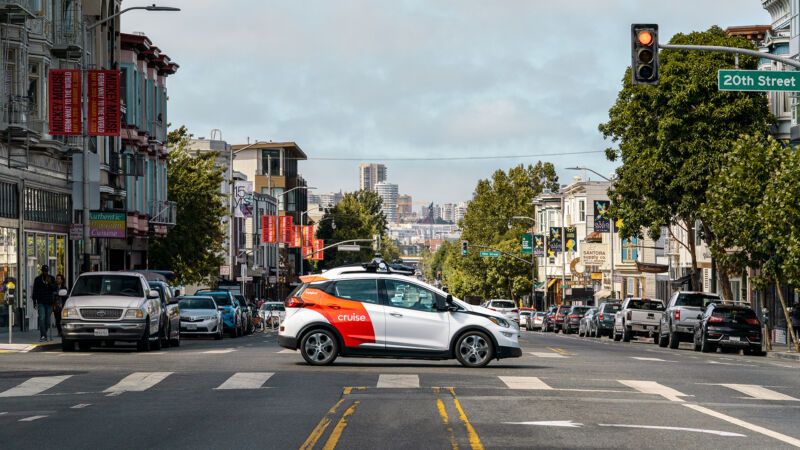Look ma, no hands —
Rival Waymo has been offering driverless rides to the public since October.
Timothy B. Lee
–

Cruise, the self-driving company that counts Honda and GM as major shareholders, has begun testing self-driving Chevy Bolts with no one in the driver’s seat, the company announced on Wednesday. A safety operator in the passenger seat has the ability to stop the car in an emergency but not “traditional driver controls,” according to the company. The car will also be monitored remotely.
Cruise has been testing its self-driving cars for more than 2 million miles. But like other companies with advanced self-driving technologies, Cruise has to decide when and how to make the leap from testing prototypes to releasing a commercial product. Launching a product before it’s ready could get someone killed.
Cruise’s leading competitor, Alphabet-owned Waymo, launched a self-driving taxi service in the Phoenix suburbs in 2017. Initially, Waymo had safety drivers behind the wheel, and its hand-picked passengers were all under nondisclosure agreements. It wasn’t until October 2020—more than three years later—that Waymo finally began offering fully driverless rides to the general public with no NDA.
Cruise hasn’t gotten as far as Waymo. There’s still a safety operator in the passenger seat, and the cars are not carrying passengers. Moreover, Cruise’s announcement has gotten an unusual amount of pushback from my sources within the industry.
Cruise likes to emphasize that San Francisco, where its cars operate, has a high density of pedestrians, bicyclists, and strangely parked vehicles. These features make it a more challenging environment—Cruise claims “40 times more complex”—than the Phoenix suburbs where Waymo is now running its driverless commercial service.
But Cruise chose one of San Francisco’s less challenging neighborhoods for these tests. The Sunset District is a residential area on the westernmost edge of the city, just south of Golden Gate Park. Its wide streets are arranged in a regular grid and tend to be less crowded and chaotic than those closer to downtown.
And critics point out that Cruise’s video shows the vehicles being tested at night on roads that appear to be almost empty. A narrator says that Cruise tested its cars “again and again,” but all the testing shots show streets that look similar—and similarly empty.
No one should fault Cruise for starting its quasi-driverless testing in the least challenging times and places. But without more details about Cruise’s testing efforts, it’s hard to judge how significant the announcement really is.
Why I’m skeptical
I learned to be skeptical of these kinds of claims after watching Waymo’s progress over the last four years. Waymo announced the start of driverless testing in late 2017, but the company provided few details about where, when, and how often it had conducted driverless tests. From its announcement, I got the impression that Waymo would soon be transitioning to having most of its vehicles operate with no safety drivers, and I wrote an overly rosy story about it. “Driverless cars are here,” I wrote.
In fact, the vast majority of Waymo’s rides continued to have safety drivers for more than two years after that announcement. It wasn’t until October 2020 that Waymo finally began letting the general public ride in driverless vehicles without signing non-disclosure agreements.
So Cruise’s Wednesday announcement might mean, possibly, that the company is almost ready for commercial launch. But the announcement could also mean the company is still several years away from that point. Without more details, it’s impossible to know for sure.
Like the rest of the industry, Cruise has had to scale back overhyped expectations for its self-driving technology. In late 2017, Cruise said it was planning to launch a commercial taxi service by the end of 2019. Cruise missed that self-imposed deadline and wisely didn’t announce a revised launch date.
With Waymo’s cars now in the field, Cruise will face growing pressure to enter the market. Cruise also faces growing competition overseas. AutoX, a Chinese company backed by Alibaba, began its own driverless tests in Shenzhen last week. And Chinese search giant Baidu recently got approval to begin testing its own vehicles without safety drivers in Beijing.

